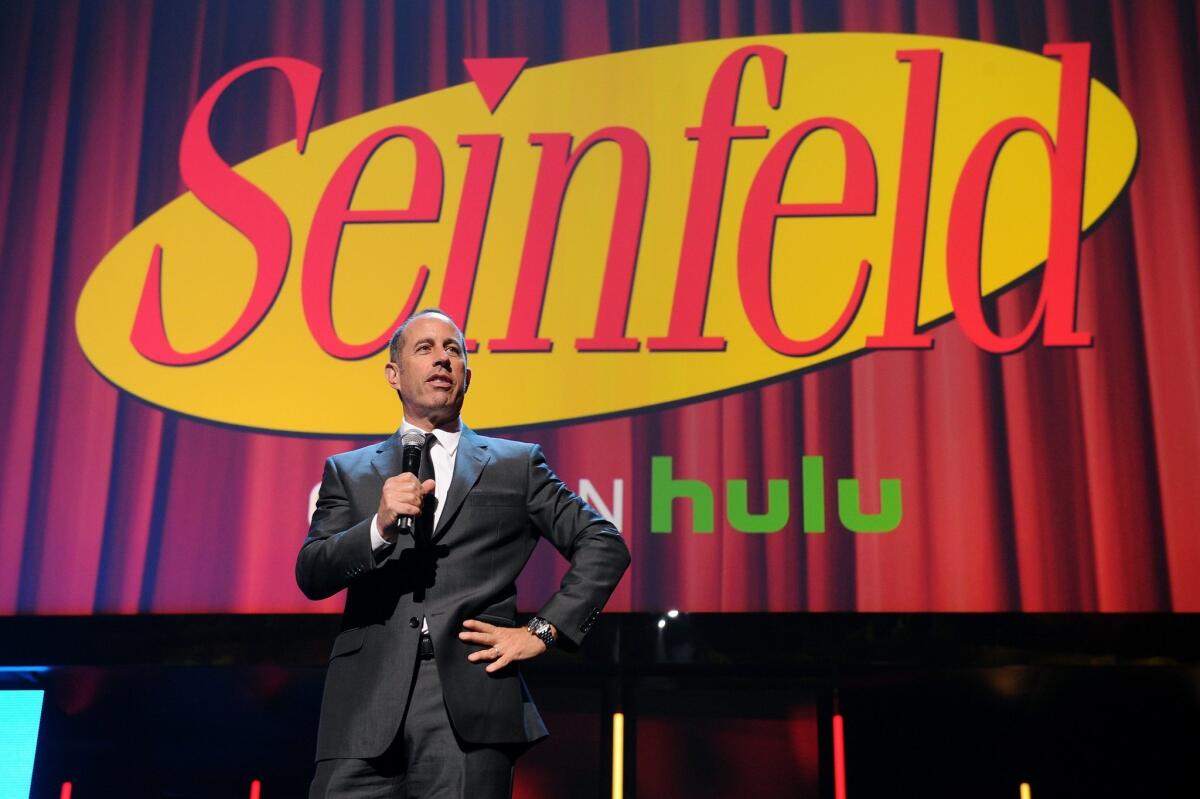‘Seinfeld’ fans to Hulu: ‘What’s the deal with all these commercials?’

Jerry Seinfeld speaks at the Hulu Upfront in April. All 180 episodes of “Seinfeld” became available to stream on Hulu on Wednesday.
- Share via
It's the sort of thing that Jerry, George, Elaine and Kramer might yada yada yada about if "Seinfeld" was still on the air: paying for a subscription to a streaming service, only to still be peppered with commercials?
It's been less than 24 hours since all 180 episodes of "Seinfeld" became available to stream on Hulu, and ad-adverse viewers have begun voicing their dismay at having to sit through commercials during their favorite comedy.
For the uninitiated: Hulu offers a paid subscription tier to their online video service at a cost of $7.99 a month that gives subscribers access to a wider range of its content, which now includes the "Seinfeld" catalog.
The streaming service relies on advertising revenue to help pay for the cost of expensive programming like "Seinfeld." For current shows that are available to stream on Hulu the day after airing, the streaming service splits the ad revenue with the TV networks that supply the shows.
Because Hulu is owned by some of the major media companies -- Walt Disney Co., NBCUniversal and Rupert Murdoch's 21st Century Fox -- they have structured the deals to also benefit those networks.
While there's no denying the ad-load, it is fewer than what viewers who tune-in to the show's repeats on cable are likely to encounter.
Hulu, after being included in some of the tweeted complaints, apologized to some users for what some consider an inconvenience. And they did hint that they haven't ruled out an ad-free plan.
The social media kerfuffle underscores how many users today come to expect an ad-free streaming experience. Hulu’s ad-supported model has been viewed by some as a roadblock keeping the Santa Monica-based company from reaching the scale of Netflix and Amazon because the modern viewer wants to minimize interruptions, particularly if they're binge-watching.
I tweet about TV (and other things) here: @villarrealy
Sign up for The Envelope
Get exclusive awards season news, in-depth interviews and columnist Glenn Whipp’s must-read analysis straight to your inbox.
You may occasionally receive promotional content from the Los Angeles Times.




